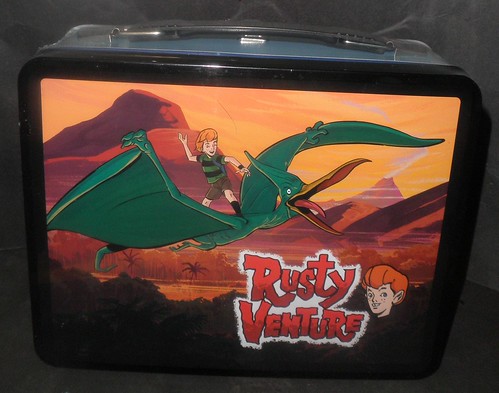Case studies are the written equivalent of the in-person demonstration, an occasion to justify your product or assistance in action. The more complex or abstract your offer (attention all "solutions providers" out there) the more essential your case studies become: their specificity has the power to cut through the fog of business rhetoric. Better yet, they allow your prospects to see themselves in your customers' shoes, encouraging them to dream what it would be like to enjoy the benefits of working with you. You can think of the case study as a cross between the testimonial and the business article. Like the testimonial, the case study features a satisfied buyer who "speaks" on your behalf. Like the article, it's structured dramatically, with a clear beginning, middle and end that holds your audience's attention through the tension of conflict and the expectation of resolution. In format, the case study is simplicity itself. Many are dinky to just one page -- a brevity that makes them especially useful as trade show handouts, direct mail inserts, supplemental pages to Web sites, and as sales collateral that can be faxed to hot prospects. Most are favorably divided into three or four labeled sections that telegraph the case study structure to readers, guiding them swiftly to the happy ending. These labels go under any number of names, but for our purposes, I'll stick to three: Challenge, Solution, Result.

The Challenge: Setting up the problem and the stakes
Cartoon Network
Think of The Challenge as the first act in a three act opera: This is the place to set the scene, introduce the lead characters, and present the problem or challenge that puts your story in motion. Articulating the character and context is easy -- just state the facts: "Widgets, Inc. Is a M commercial fabricate firm serving extrusion plastics concerns in the southern United States." For the challenge itself, present both the problem to be solved (or the occasion that may be reached) plus the stakes -- the theorize why the problem or occasion matters. It's not enough to say that Widgets, Inc. Had an inefficient scheme supervision system. So what? You need to allege the meaning of the challenge to the customer, either it's a negative consequence to overcome, or a certain outcome that might be gained: Negative: "Widgets Cfo Lex Palmer estimates that the business lost roughly 25,000 man-hours a year -- or ,875,000 in wasted resources -- through the mismanagement of project-team time, talent and focus." Positive: "According to Widgets engineer Rufus Manchester, a fifteen percent revising in supervision efficiency would cut the mean scheme time from six weeks to four, and lead to
The Solution: Putting your services on stage
In the middle or second act of your study, the Solution, you introduce the hero: The product or assistance your business provides that solves the customer's problem or helps them achieve their goals. Here, your objective is to paint a picture, to justify the clarification so graphically readers can "see" the evolving events in their imagination. Specificity is critical: Every detail you conduce makes the clarification more tangible, more real. That's why a broad, vague assertion is insufficient: "Widgets, Inc. Deployed the ProjectMaster clarification over its departments." Instead, build the report piece by piece: "First, the ProjectMaster team of workflow analysts, It network developers, and systems engineers spent a week on-site analyzing Widgets' work processes. The team's subsequent report, reviewed by senior managers at Widgets, formed the basis for a new workflow design. ProjectMaster recommended a wireless networking infrastructure, new collaborative supervision software applications, and a set of definite policies -- tailored to Widgets' unique circumstances -- to reduce meeting times and streamline product development. After a one-month trial period with one Widgets department, ProjectMaster deployed the faultless clarification over the entire enterprise, and established normally reporting protocols to monitor enlarge and make adjustments, as required."
The Result: production the payoff
At this point, your case study should verily tremble with tension. The Challenge established a conflict between "what-is" and the desired "what-could-be." Then the clarification detailed a response to the Challenge. Now every reader will want the payoff: Did the clarification work? And what convert did it bring about? The follow is, as its name suggests, an articulation of the results; your job is to present the consequences of the Solution. As you had in your report of the Solution, make the follow as definite and detailed as you con. If possible, quantify the results with numbers, possibly with an number of money saved (or earned), a division increase in productivity, or a dramatic discount in time or waste. But whenever possible, put the most leading follow in your client's words. If you can get permission to use a direct quote, use it -- it's the most credible source of information. A great follow quote might look like this: "In just six months, we cut our mean design-to-implementation time from six weeks to seventeen work days," says Bill Sharpton, Widgets Coo. "With ProjectMaster in place, we're on track to perceive an further M in profits this year and an further M next year."
Do your homework and the writing will follow As you can see, the case study is a uncomplicated format that packs a lot of punch in a small space. For maximum impact, invest most of your writing time in research -- convention the facts and quotes you need to give your case immediacy and credibility. Once you have your basic facts in front of you, the 3-step structure makes the writing itself fast and painless.
.75M to .25M in further profits for the company." Writing the Case Study in Three easy StepsTags : โมเดลกระดาษ
No comments:
Post a Comment